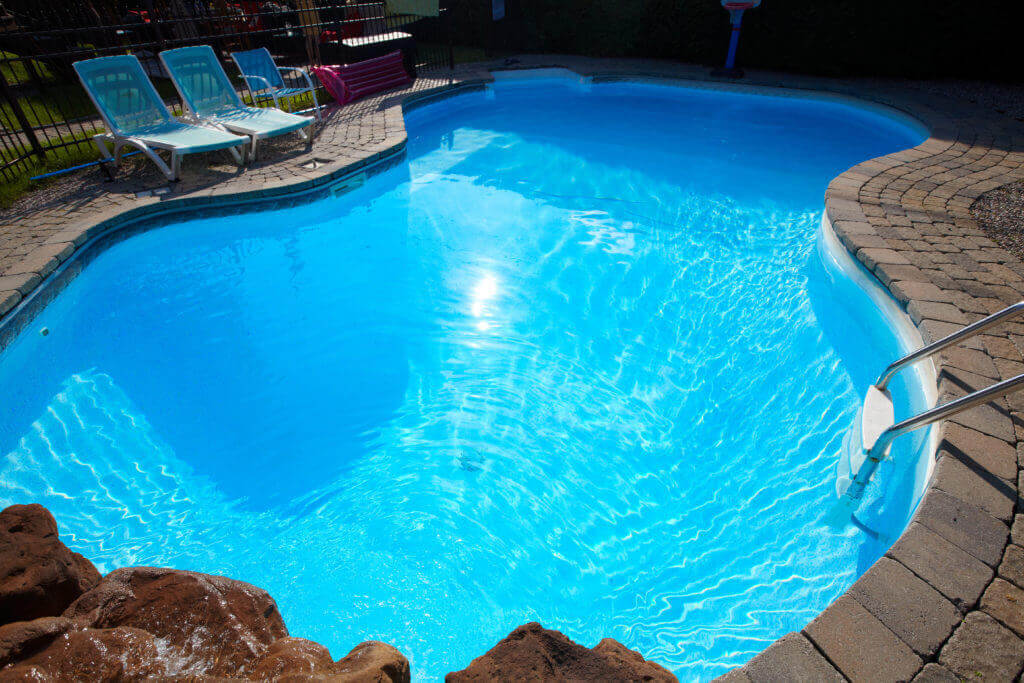Have you ever found yourself floating peacefully in your backyard pool, only to suddenly wonder what exactly is beneath you? What are those gleaming squares lining your pool, silently enduring chemicals, temperature fluctuations, and the occasional cannonball from your nephew who doesn't understand the concept of "no running"? And more importantly, how do these materials interact with the modern marvels of robotic pool cleaners that navigate your aquatic domain?
If these questions have never crossed your mind, congratulations on your carefree existence. For the rest of us neurotic pool owners who lie awake at night pondering the material science of our recreational investments, let's dive deep into the world of pool tiles and see how they pair with today's advanced cleaning technology.
The Tile Chronicles: Not All Squares Are Created Equal
According to the National Tile Contractors Association, the selection of proper pool tile is one of the most critical decisions in pool construction. It's not just about aesthetics—though let's be honest, nobody wants a pool that looks like it was designed during a particularly dark period of 1970s interior design.
Ceramic: The Stalwart Traditional
Ceramic tile has been the go-to pool material since your grandparents were doing the backstroke. It's the reliable Toyota Camry of pool surfaces—not flashy, but it'll probably outlast your mortgage. These tiles typically feature:
- Moderate cost
- Extensive color options
- Good durability against chemicals
- Relatively smooth surface
The Ceramic Tile Institute of America notes that ceramic tiles, when properly installed and maintained, can last 20+ years in pool environments. However, they do have microscopic pores that can harbor algae over time, requiring periodic deep cleaning.
Porcelain: Ceramic's Sophisticated Cousin
Porcelain is essentially ceramic that went to finishing school. It's fired at higher temperatures, making it denser and less porous. This translates to:
- Enhanced durability
- Lower water absorption (less than 0.5%)
- Superior frost resistance for outdoor pools
- Smoother finish
The Tile Council of North America classifies porcelain as ideal for pool environments due to its exceptional resistance to chemicals and staining. For pool owners in regions that experience freezing temperatures, porcelain's resilience against frost heaving makes it worth the higher price tag.
Glass Tile: The Supermodel of Pool Surfaces
Glass tile is the knockout gorgeous option that makes your neighbors wonder if you've been embezzling funds from your day job. These luminous tiles create stunning visual effects as light plays through the water, but they come with considerations:
- Premium price point (sometimes eye-wateringly expensive)
- Incomparable aesthetic appeal with depth and luminosity
- Completely non-porous surface
- Typically smaller tiles with more grout lines
The American Glass Research Institute highlights that glass tiles reflect and refract light in ways that other materials cannot, creating that coveted "jewel box" effect in pools. However, their slick surface presents unique challenges for pool cleaners, as we'll discuss later.
Stone: Mother Nature's Contribution to Your Backyard
Natural stone tiles—think travertine, limestone, or slate—bring organic texture and warmth to pool designs. However, these materials are the divas of the pool world, requiring special consideration:
- Variable porosity (some stones are quite thirsty)
- Susceptibility to etching from pool chemicals
- Usually requires regular sealing maintenance
- Provides excellent non-slip surfaces when textured
The Natural Stone Institute cautions that not all stone is suitable for pool environments. Proper selection, treatment, and maintenance are essential for longevity. The right stone, however, can create a lagoon-like natural appearance that's impossible to achieve with manufactured materials.
The Robot's Perspective: How Your Pool Cleaner Feels About Your Tile Choices
Now that we've covered the main players in the pool tile game, let's consider how these materials interact with modern robotic pool cleaners like the Hydro-Puls from Xbenbot. If pool tiles could talk, they'd probably have strong opinions about the robots that crawl over them daily. Likewise, if pool robots had a support group, they'd definitely complain about certain tile types.
Ceramic and Porcelain: The Robot's Comfort Zone
Robotic pool cleaners generally have the easiest time with ceramic and porcelain surfaces. The Hydro-Puls excels on these surfaces because:
- The relatively smooth surface allows for consistent traction
- The moderate coefficient of friction prevents slipping without taxing the motors
- The durability of the tile withstands the consistent pressure from cleaning brushes
- The regular grid pattern of grout lines provides navigational reference points
As one Xbenbot engineer put it, "Ceramic and porcelain tiles are like well-paved highways for our robots. They can maintain optimal cleaning paths and energy efficiency." The Hydro-Puls's advanced brushing system is particularly effective at reaching into the slightly more porous surface of ceramic to extract embedded contaminants that manual cleaning might miss.
Glass Tile: Beautiful but Challenging
Glass tiles present a unique set of challenges for robotic cleaners. According to a study by the American Society of Mechanical Engineers, the slick surface of glass can reduce traction efficiency in robotic cleaners by up to 30% compared to more traditional surfaces.
The Xbenbot Hydro-Puls addresses these challenges through:
- Advanced traction control that adjusts to slicker surfaces
- Customized brush types specifically designed for gentle yet effective cleaning of glass
- Smart pressure sensors that prevent the unit from slipping or getting stuck
- Specialized navigation algorithms that compensate for reduced friction
"Glass tiles are like cleaning an ice rink," jokes a veteran pool maintenance professional. "Your standard cleaner might do the moonwalk across the surface without actually cleaning anything. You need a machine with some serious smarts."
Stone: The Obstacle Course
Natural stone presents perhaps the greatest challenge for robotic pool cleaners due to its irregular surface and variable texture. The Hydro-Puls tackles stone tiles through:
- Reinforced treads that maintain grip on uneven surfaces
- Powerful suction that can extract debris from textured stone
- Adaptive cleaning patterns that ensure coverage despite navigation challenges
- Heavy-duty scrubbing brushes that can reach into natural depressions
The National Swimming Pool Foundation notes that stone-tiled pools typically require 20-30% more cleaning power to maintain the same level of cleanliness as smoother-surfaced pools. This is precisely why the Hydro-Puls's triple-motor design provides such an advantage in these challenging environments.
When Tiles Go Bad: The Cleaning Nightmare Scenarios
The relationship between pool tiles and automatic cleaners isn't always harmonious. Several common issues can create headaches for even the most advanced robotic cleaners:
Calcium Buildup: The White Plague
According to the Association of Pool & Spa Professionals, calcium scaling is the most common maintenance issue with pool tiles, affecting more than 65% of pools over five years old. This crusty white buildup occurs when:
- Water pH consistently runs high
- Calcium hardness exceeds recommended levels
- Water temperatures regularly rise above 90°F
- Evaporation concentrates minerals at the waterline
Standard robotic cleaners often struggle with severe calcium deposits, but the Xbenbot Hydro-Puls features specialized hard-water brushes that can tackle light to moderate scaling during regular cleaning cycles, preventing the worst buildup before it becomes problematic.
Etched Tiles: The Chemical Casualties
The Water Quality Association reports that improper chemical balance can actually etch or corrode pool tiles over time, creating microscopic valleys that trap debris and algae. This is particularly common with natural stone and lower-quality ceramic tiles.
These etched surfaces present unique challenges for robot cleaners, as the uneven topography can:
- Trap fine debris that's difficult to extract
- Create uneven cleaning patterns
- Accelerate wear on cleaning brushes
- Compromise navigation efficiency
The Hydro-Puls's adaptive pressure system helps overcome these challenges by adjusting brush pressure based on surface resistance, ensuring effective cleaning without excessive wear.
Loose Grout: The Robot Trap
Nothing strikes fear into the heart of a pool robot like loose or deteriorating grout. The Tile Council of North America identifies failing grout as a primary cause of robotic cleaner malfunctions, as the robots can catch edges or even dislodge already-compromised tiles.
"I've seen robots that look like they've been through a war zone because of bad grout," says a pool maintenance professional from Arizona. "They come out dragging tile pieces like battle trophies."
The advanced sensors on the Xbenbot Hydro-Puls help detect and navigate around problematic areas, but no robot is completely immune to the perils of deteriorated surfaces. Regular inspection and maintenance of grout lines remain essential for both tile longevity and robot performance.
The Perfect Partnership: Choosing Tiles with Your Robot in Mind
If you're in the enviable position of building a new pool or retiling an existing one, consider how your tile choices will affect your robotic cleaning assistant. The engineers at Xbenbot recommend:
- Prioritize durability: Select tiles rated specifically for pool environments, not just general outdoor use.
- Consider texture carefully: Moderately textured surfaces provide good traction for swimmers without overly challenging robotic cleaners.
- Think about color practicality: Very dark tiles show dirt and debris more prominently, while very light tiles showcase algae growth more readily. Mid-tones in blue or gray tend to be most forgiving.
- Don't skimp on installation: According to the Consumer Product Safety Commission, over 40% of pool surface problems stem from improper installation rather than material failure.
- Plan for maintenance: Even with the best robotic cleaner, all pool surfaces require occasional professional attention. Choose materials that align with your maintenance commitment level.
The Bottom Line: Your Tiles and Robot Can Live Happily Ever After
The relationship between your pool tiles and your robotic cleaner doesn't have to be complicated. With thoughtful selection and proper maintenance, these two essential components of your pool ecosystem can work together harmoniously for years.
The Hydro-Puls Robotic Pool Cleaner represents the cutting edge of adaptable cleaning technology, capable of navigating and maintaining virtually any pool surface. Its sophisticated sensors, powerful motors, and specialized brushes make it the ideal companion for pools with varying tile types—even those with challenging surfaces or mixed materials.
As one satisfied Xbenbot customer put it: "My pool has three different tile types from a renovation that went... let's say 'creative.' My old cleaner would get confused and just give up, but the Hydro-Puls handles it like a champ. It's like the difference between hiring a high schooler and a professional."
So the next time you're floating in your pool, take a moment to appreciate the silent partnership between your tiles and your robotic cleaner. They're working harder than you think to keep your aquatic oasis clean and inviting—even if one of them occasionally gets stuck in the corner contemplating its existence.
After all, doesn't everyone deserve a clean pool without having to think about what's happening beneath the surface? With the right tiles and a Hydro-Puls on duty, you can get back to the important things in life—like perfecting your cannonball technique and pretending not to hear when your spouse asks you to help with the groceries.
After all, doesn't everyone deserve a clean pool without having to think about what's happening beneath the surface? With the right tiles and a Hydro-Puls on duty, you can get back to the important things in life—like perfecting your cannonball technique and pretending not to hear when your spouse asks you to help with the groceries.




Leave a comment
This site is protected by hCaptcha and the hCaptcha Privacy Policy and Terms of Service apply.